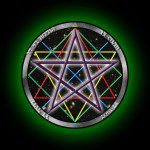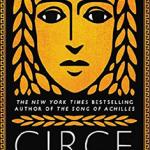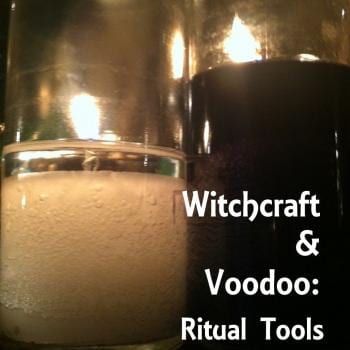What is your definition of the word “ritual”? What are your rituals- mundane and spiritual? How do they inform each other? Is ritual a necessary component to spiritual practice?

I did not find myself especially inspired by this topic for the Pagan Experience this week. It’s too broad and the questions are leading. First of all, what we Pagans typically call “ritual” is actually more properly defined as a “ceremony” or a “rite” by the dictionary definition, since ours do not tend to be repetitive or dogmatic (no, not even in Wicca).
Secondly, I fail to see much difference between the mundane and the spiritual, and even if I did, you would be using two entirely different meanings for the word (as I noted in the previous sentence) so what point would there be in comparing them?
Third, since there is little boundary between them for me, I assume they inform each other by definition.
Fourth, I suppose that whether or not it was necessary would depend upon your definition of “ritual.” Many of us would flatly deny this, considering the original meaning of “ritual,” without keeping in mind that we do not use the word with that meaning in Paganism. If you consider what we intend by the meaning of the word – namely, a sacred ceremony – then I would say yes, it is a necessary component of spiritual practice, because otherwise you don’t have a “practice,” do you? Even meditation or kissing your hand twice to the moon are both “rituals” in the sense that we mean. And I think it’s especially important to keep that in mind, since we tend to recognize each other by our praxis, not our dogma. But if you mean to ask me whether or not I think it’s necessary for us to make up big, elaborate events; or perform a rite in a particular prescribed way each time (unless that’s part of the discipline you’re intending) then I would say, “Of course not.”
So, that being said, since my editors expect about a thousand words out of me per article, I thought I might quote some of the things I said about Wiccan ritual in particular in my book. I begin with my introduction to the third chapter, “The Craft,” and then skip to the section where I deal with “ritual” specifically. My work is intended for the beginner or for someone who is analyzing and breaking down the components of a ritual.
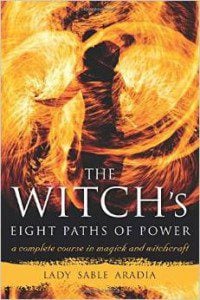
The Craft
The use of language, sound, and ritual is the most familiar form of Witch’s magick; it’s what people usually think of when they hear the word “Witchcraft.” Rites, chants, spells, runes, and charms speak directly to your conscious mind to formulate your Intent, and if well-written, they also utilize symbols, archetypes, correspondences, and mythology to speak to your unconscious mind. Most Witchcraft books focus on this Third Path. My intention with this chapter, then, is to teach you about the theory rather than specifics. Hopefully you will never need to consult a magickal recipe book ever again, and will instead have the practical tools at your disposal to make the best kinds of spells, rituals, chants, charms, and runes; the ones you write for yourself.
These methods all use a language of symbols and art to speak to the subconscious mind, and through that, the Universe, to communicate a specific desire. Learning the Witch’s language of symbolism is like learning the language of manifestation. Using it makes it easier to communicate to the Universe what you want. The study and practice of this symbolic language is called “the art” or “the craft” for a reason.
Charles Poncé proposed the idea that magick is simply a way of mapping the complex psyche of the human mind. If that’s true, the symbolism used in magick could have a universal application.

In her groundbreaking sociological work Persuasions of the Witch’s Craft, T. M. Luhrmann writes of a field study she conducted of England’s occult community. In it, she noticed that a Witch’s perceptions slowly shift during the course of her studies in magick to see different symbols and meanings in events, experiences, and responses to the world. Prior to occult study, these connections and interpretations would not have been made. Luhrmann called this “interpretative drift,” and she viewed it as the process of overcoming skepticism. She ultimately found it impossible to maintain the detached perspective of the anthropologist and continue occult studies. Eleven years later, anthropologist Susan Greenwood published Magic, Witchcraft, and the Otherworld: An Anthropology. Greenwood undertook the study of occultism in earnest in her field research, rather than approaching it as an outsider, and treated it like “learning the language” of another culture, complete with that culture’s framework and comprehension. She saw the occult community’s view of the otherworld, which coexists with the rational world of science, as another form of “knowing,” and one did not have to be rejected to embrace the other. This view was also shared by Carlos Castaneda, and it is beginning to gain more common acceptance in the field of psychology, where tools such as guided meditation and visualization are being incorporated into mainstream psychological and therapeutic practice.
“Interpretative drift” is exactly what you want to achieve in the study of Witchcraft. When you learn to speak the language, and when understanding the language becomes second nature and you begin to see its symbolism in everyday life, you will be able to work your magick, and thus create change in the world according to your Will, more effectively.
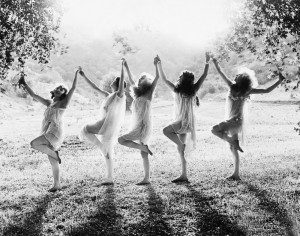
Rituals
Wiccan spells and rituals are really a form of performance art. Setting, sound, color, symbols, movement, actions, tastes, smells, and feelings come together to create lovely participatory art. The more senses you bring to bear, the more effective your magick will be! A spell engages all the same elements as a ritual, but it is focused toward a more “practical” purpose.
Basic Structure of Wiccan Ritual
A Wiccan ritual follows a loose pattern that leaves a fair bit of room for creativity and individual expression. Think of writing a ritual like writing a short story. There is a specific format, but a lot of different things can happen within it! I’ve broken it down into its component stages, and rather than giving you a specific series of actions to perform, I will list possibilities that you could combine to make a ritual of your own.
Table 6: Stages of Ritual
| Stage: | Purpose: | Actions: | Chants: | Notes: |
| Clearing Ritual Space | Makes a portable temple, creates a psychological liminal space between the worlds | Besom, asperge, cense, scatter herbs or salt, play a singing bowl, make a crystal grid, ring a bell, draw banishing pentagrams | As the Besom Sweeps; Circle Gate | Usually done widdershins (counterclockwise); start in north (womb of the Mother), east (new beginnings), or west (death rituals). |
| Casting Circle | Delineates sacred space; forms microcosm within the macrocosm | Mark the edge of the circle in some way (salt, water, incence, fire, herbs, cord, athame, joining hands etc.) | The Circle is Cast; Circle Gate | Usually done deosil (clockwise). Start where you started clearing. Sometimes a besom is used to make a threshold gate. |
| Calling Quarters | Brings four elements and directions together to create Axis Mundi (world navel) from which all things are possible | Invoke powers and directions using items or symbols (see Appendix C); light candles; draw pentagrams (see figure 8). | Earth My Body; Air Moves Us | Usually done deosil |
| Invocation or Evocation | Calls the divine as you understand it to aid your work or be honored | Light candles; draw down the moon and/or sun; make offerings to icons | Silver Shining Wheel; Threefold God Chant; Goddess Chant; The Earth is Our Mother | See below |
| Celebration or Magick | The reason you are doing the ritual | Esbats (see Appendix D); Sabbats (see figure 10); rites of passage; initiations; divination; magick and spells | Various, depending on purpose | |
| Cakes and Ale | Takes a portion of the blessing into yourself; grounding; offering energy back to the Universe | Bless (symbolic Great Rite, lay on hands, purify with salt or salt water) and consume food and drink; portion left for the deities and spirits | Earth My Body; Thanks Turns the Wheel | Varies greatly according to tradition and perception of the gods |
| Thanking Divinity | Acknowledges the gods and thanks them for their help | Bow to icons; bring priestess or priest out of trance; put out candles | We All Come from the Goddess / Horned God; Hoof and Horn; Goddess Chant | More details in chapter eight |
| Releasing Quarters | Sends your guests home, thanks them for coming and releases gathered energies | Devoke powers and directions using items or symbols (see Appendix C); put out candles; kiss hand to directions; draw pentagrams (see Figure 8). | The Earth the Air the Fire the Water | Widdershins or deosil depending on tradition |
| Opening Circle | Returns you to the normal world; releases the Axis Mundi | Sweep, pick up or break up whatever marked the ground; create doorway; retrace circle; rejoin and release hands | The Circle is Open; May the Circle Be Open | Usually widdershins |
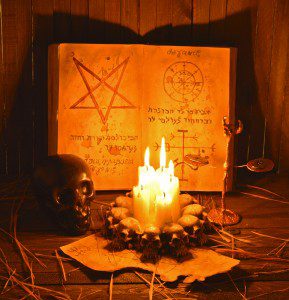
Table 7: Vocalizations for Ritual
| Clearing Ritual Space | “With this besom I clear this space.”“With this salt (incense, flame, water) I cleanse this space; may all negatives be walled (blown, burned, washed) away.” |
| Casting Circle | “I cast this circle round and round; between the worlds we now are bound.”“This is a time that is not a time, in a place that is not a place, on a day that is not a day.”“As above, so below. As within, so without. As the Universe, so the self.” |
| Calling Quarters | “Guardians of the Watchtower of the (Direction), Powers of (Element); I summon, stir, and call you up to witness this rite and guard this circle!”“By the earth that is Her body, by the air that is Her breath, by the fires of Her bright spirit, and by the waters of Her sacred womb, the circle is cast.”“Peace to the south! Peace to the north! Peace to the east! Peace to the west! May there be peace throughout the whole world!” |
| Invocation or Evocation | Charge of the Goddess, Charge of the God |
| Celebration or Magick | Varies according to purpose |
| Cakes and Ale | See below |
| Thanking Divinity | “Thank you, (name of deity) for joining us in me in my rite. Go if you must, stay if you will; but whether you go or stay, hail and farewell.” |
| Releasing Quarters | “Guardians of the Watchtower of the (Direction), Powers of (Element); thank you for joining us in our rite! Return now to your earthly (airy, firey, watery) realms harming none as you pass! Hail and farewell!”“Thank you (elements and powers called) for joining us in our circle. Go if you must, stay if you will, but whether you go or stay, hail and farewell.”“By the earth that is Her body (etc.) the circle is open.” |
| Opening Circle | “May the circle be open but unbroken. Merry meet, and merry part, and merry meet again.” |
– From The Witch’s Eight Paths of Power: A Complete Course in Magick and Witchcraft by Lady Sable Aradia (Red Wheel/Weiser 2014)
You can get all the latest updates at the Between the Shadows Facebook page. And don’t forget to check out the Patheos Pagan channel for some great articles.


